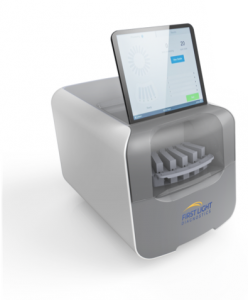Overuse of antibiotics has created new risks for patients through an ever-increasing number of multi-drug-resistant strains of bacteria. According to the CDC, Antibiotic resistance is one of the biggest public health challenges of our time. Each year in the U.S., at least 2 million people get an antibiotic-resistant infection, and at least 100,000 people die from hospital-acquired infections, more than twice the number of people killed in car accidents each year.
Each unnecessary use of an antibiotic hastens the day when bacteria become drug-resistant. In fact, bacteria are developing antibiotic resistance faster than we can develop new antibiotics. As a result, some bacteria are resistant to virtually all marketed antibiotics. Unless action is taken, we may be approaching a post-antibiotic world, a world in which bacteria resistant to most known antibiotics are widespread, minor infections are life-threatening, and common surgeries cannot be performed because of the risk of untreatable infections. It may be hard to imagine this frightening, post-antibiotic world – but it would be much like the world more than 90 years ago, before the discovery of penicillin.
The greatest mortality risk from antibiotic-resistant infections is to patients in hospitals. Not only is the patient population naturally the most vulnerable to infection, but the hospitals where they are treated are typically where antibiotic-resistant organisms are most prevalent. Many deaths could be prevented, however, if patients could be given the right narrow-spectrum antibiotic, at the first sign of infection.

The key to saving lives and reducing the spread of drug-resistant bacteria is to prescribe the right antibiotic at the earliest time – and to never to prescribe antibiotics when they are not needed. This requires tests that quickly identify the patients with bacterial infections and that rapidly determine antibiotic susceptibility to effectively treat them. Today’s tests are much too slow to do this, as tests that require culture can take 4 days to deliver results. Time is of the essence for these patients.
In contrast, the tests being developed by First Light Diagnostics can detect pathogens in patient samples in about 30 minutes and determine antibiotic susceptibility in about 4 hours. These rapid results will allow clinicians to make more informed decisions regarding the proper, targeted therapy for each patient, at the onset of their infection.
As the CDC notes, “Antibiotic resistance threatens everyone… Many medical advances are dependent on the ability to fight infection using antibiotics, including; joint replacements, organ transplants, cancer therapies, and treatment of chronic diseases like diabetes, asthma, and rheumatoid arthritis.” At First Light, we envision a world in which antibiotics are not overused so they remain effective, where patients are rapidly and effectively treated by getting the right antibiotic therapy, if needed, at the onset of their infection, and where hospital-infection-related deaths are a rarity.
